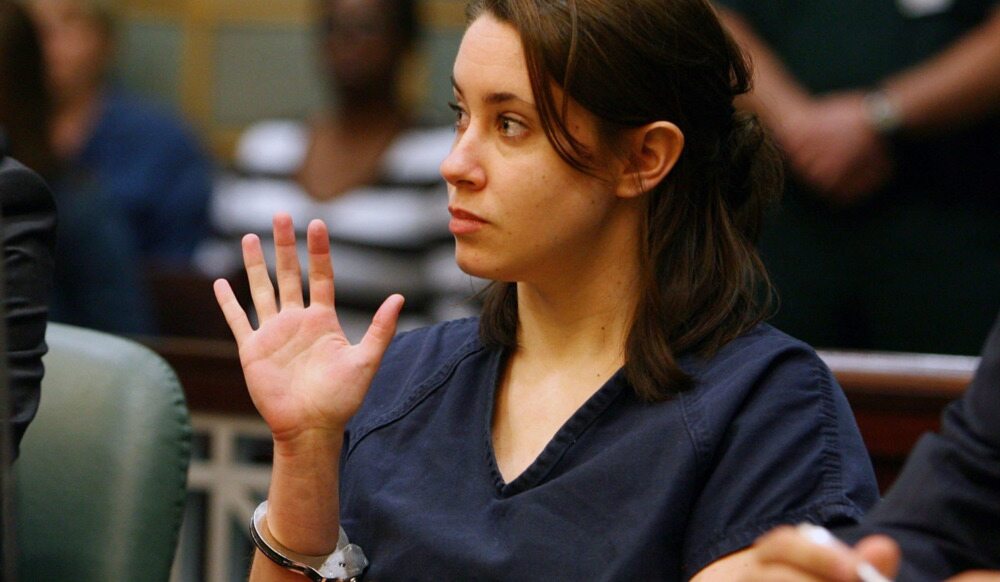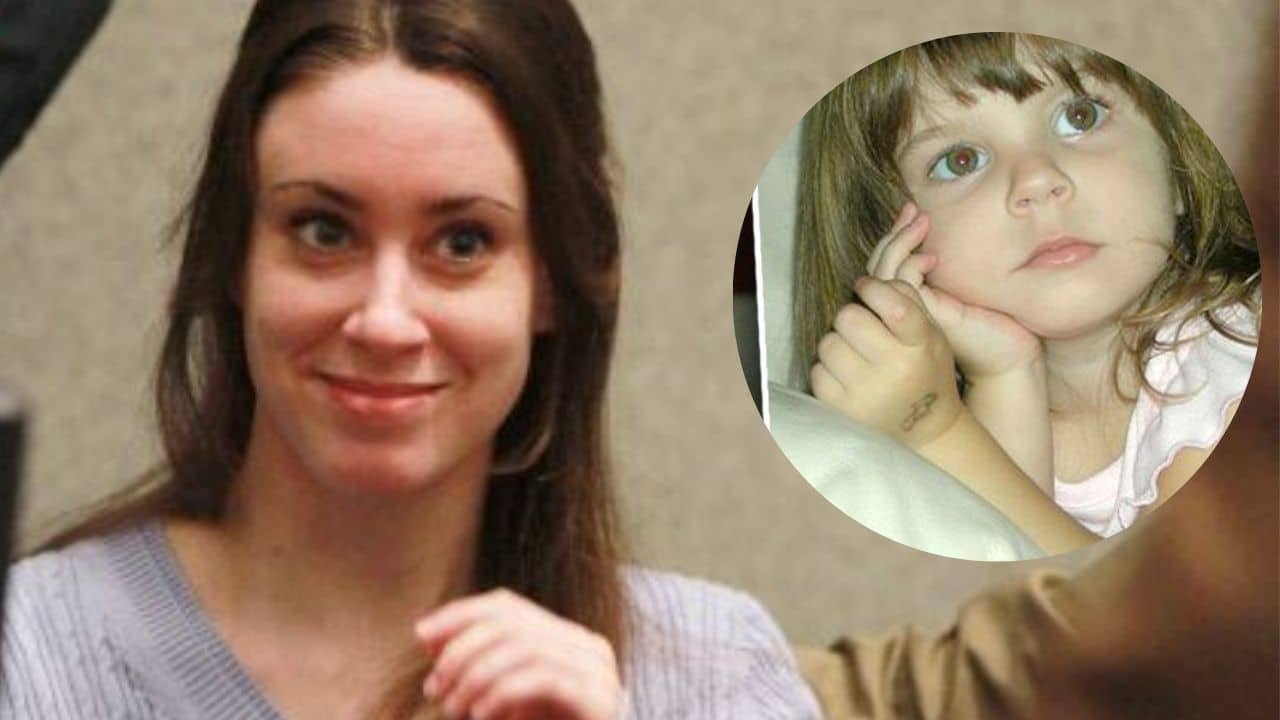Casey Anthony: What Happened After Caylee's Case?
Can a past shrouded in controversy ever truly be erased? Casey Anthony, a name forever etched in the annals of American true crime, now 36, continues to navigate a life shaped by the events surrounding the disappearance and death of her two-year-old daughter, Caylee Anthony.
The chilling narrative began in June 2008, when Casey Anthony, then a young woman, became the focus of a nationwide search. The disappearance of Caylee Marie Anthony triggered an investigation that would grip the nation for months, fueled by the mystery surrounding the child's whereabouts and the inconsistent statements offered by Casey. As the days turned into weeks, the story of Caylee Anthony became a media sensation, spawning countless news reports, television specials, and a collective fascination with the enigmatic circumstances surrounding the case. Cindy, Caylee's grandmother, reported her missing in July 2008, setting off a chain of events that would culminate in a highly publicized trial and a verdict that remains a source of intense debate.
Caylee was last seen on Father's Day, June 15, 2008, though her absence was not reported until July 15th, a month later. This delay added another layer of complexity to an already perplexing situation. During the month-long gap, Casey Anthony's actions, or lack thereof, fueled suspicion and speculation. Rather than actively searching for her missing daughter, she was seen at various nightclubs and parties, living a seemingly carefree existence. This behavior, combined with the shifting and often contradictory accounts she provided to authorities, painted a troubling picture of her character and her involvement in Caylee's disappearance.
The discovery of Caylee's remains in a wooded lot near the Anthony home on December 11, 2008, brought a tragic end to the search. The autopsy results, though not definitive, further clouded the case, and the subsequent legal proceedings would be a lightning rod for controversy and public outrage. The trial of Casey Anthony dominated headlines, with prosecutors arguing she was guilty of murdering her daughter, and the defense vehemently denying those charges. The jury's eventual verdict of not guilty on the murder charge was met with disbelief and condemnation by many, cementing the case's place in legal history as one of the most divisive in American jurisprudence.
The case presented a complex tapestry of evidence, including inconsistencies in Casey's statements, the lack of any solid proof, and the prosecution's inability to definitively establish a cause of death. The defense skillfully challenged the prosecution's claims, exploiting the flaws in the evidence and planting reasonable doubt in the minds of the jurors. In the end, the jury, faced with the difficult task of determining guilt beyond a reasonable doubt, returned a verdict that shocked the nation and left many questions unanswered.
Following the trial, Casey Anthony was acquitted of the murder charges but was found guilty on four counts of providing false information to law enforcement. She was sentenced to four years in prison for the convictions, though, due to time served and good behavior, she was released in 2011. Since her release, Anthony has largely remained out of the public eye, with the exception of select interviews and documentaries, carefully curated attempts to tell her side of the story. Her life after prison has been a journey of trying to reclaim a semblance of normalcy and grapple with the unrelenting shadow cast by the Caylee Anthony case.
The legacy of the Caylee Anthony case extends far beyond the courtroom and the media frenzy it spawned. It has spurred widespread debates about media ethics, the impact of public opinion on legal proceedings, and the complexities of domestic violence. The trial raised critical questions about how society perceives motherhood, the responsibility of parents, and the burden of proof in the legal system. The case also became a catalyst for conversations about how to protect children, the importance of reporting abuse, and the need to hold abusers accountable. Ultimately, the case serves as a stark reminder of the fragility of life, the potential for tragedy to strike within families, and the enduring power of the past.
| Category | Information |
|---|---|
| Full Name | Casey Marie Anthony |
| Date of Birth | March 19, 1986 |
| Place of Birth | Warren, Ohio |
| Parents | Cindy Anthony, George Anthony |
| Sibling | Lee Anthony (Older Brother) |
| Daughter | Caylee Marie Anthony (August 9, 2005 December 11, 2008) |
| Noteworthy Event | Acquitted of murder in the death of her daughter, Caylee Anthony (2011) |
| Current Age | 38 (as of October 26, 2024) |
| Significant Issues | False Statements to Law Enforcement, Public Perception |
| Legal Status | Released from prison in July 2011 after serving time for providing false information to law enforcement. |
| Public Perception | Subject of intense public scrutiny and negative opinion due to the circumstances of Caylee's death and her subsequent trial. |
| Media Presence | Subject of numerous documentaries, books, and television shows. |
| Current Activities | Maintains a low public profile, but has occasionally granted interviews and participated in media projects to share her side of the story. |
Reference: Biography.com
The circumstances surrounding Caylee's disappearance and death are deeply troubling, encompassing a web of deceit and a lifestyle that did not align with a mother's role. Casey's failure to report Caylee missing for 31 days created a prolonged period of uncertainty and fueled intense public scrutiny. Her actions, which included partying and a lack of concern about her daughter's well-being, contrasted sharply with the image of a grieving parent. Furthermore, her inconsistent statements to law enforcement added another layer of complexity to the case, casting doubt on her credibility and ultimately impacting the public's perception of her involvement.
The media coverage surrounding the Caylee Anthony case was relentless, turning the story into a true-crime phenomenon. The saturation of the media, from television networks to social media platforms, kept the public riveted. The details of the investigation, the trial, and the verdict were dissected and replayed endlessly. This constant bombardment by media created a polarized public opinion, with many believing in Casey's guilt and others questioning the evidence and the fairness of the trial.
The legal proceedings that followed the discovery of Caylee's remains were equally contentious. The prosecution's attempts to build a case against Casey were hampered by the lack of physical evidence and the controversial circumstances of the death. While the prosecution painted a narrative of a mother who had killed her child, the defense successfully cast doubt on the evidence, ultimately leading to an acquittal on the murder charges. Despite the verdict, the public remained divided, with many unable to accept Casey's exoneration. The case raised significant questions about the role of media in the courtroom, the challenge of proving a crime, and the capacity for public opinion to impact the legal process.
Since her release from prison, Casey Anthony has attempted to create a new life, one separate from the shadow of the Caylee Anthony case. However, the stigma associated with the case has remained a significant challenge, making it difficult for her to find employment and reintegrate into society. Anthony has expressed a desire to move forward and build a life for herself. She has spoken candidly about her experience in interviews and documentaries, offering her version of events in an attempt to explain what happened. However, public skepticism continues to be a major obstacle, preventing her from escaping the notoriety that has defined her life for more than a decade.
The death of Caylee Anthony, though tragically ending a young life, has also led to important conversations about how society protects children. The case underscored the need for vigilance and for swift reporting of missing children. It brought to light the limitations of our legal system and prompted a discussion about how to improve those systems. Additionally, it led to a focus on the responsibility of parents. It prompted communities to review child protection procedures. It's crucial to reflect on this case, as it serves as a reminder of the importance of protecting vulnerable individuals and holding those accountable.
Casey Anthony has not been publicly tied to another romantic relationship, so information about her love life after the Caylee Anthony case is very limited. The circumstances surrounding her case have made it difficult for her to form and maintain relationships. Privacy has also been a primary concern, given the intense public scrutiny she faces.
The lasting legacy of the Caylee Anthony case extends beyond the courtroom and the media coverage. It continues to be a subject of debate and discussion among legal experts and the general public. This case has become a cautionary tale about the complexities of the justice system, the power of public perception, and the enduring impact of tragedy. Even today, years after the trial, the case remains a stark reminder of how swiftly life can change, the importance of parental responsibility, and the ongoing quest for truth and justice.


